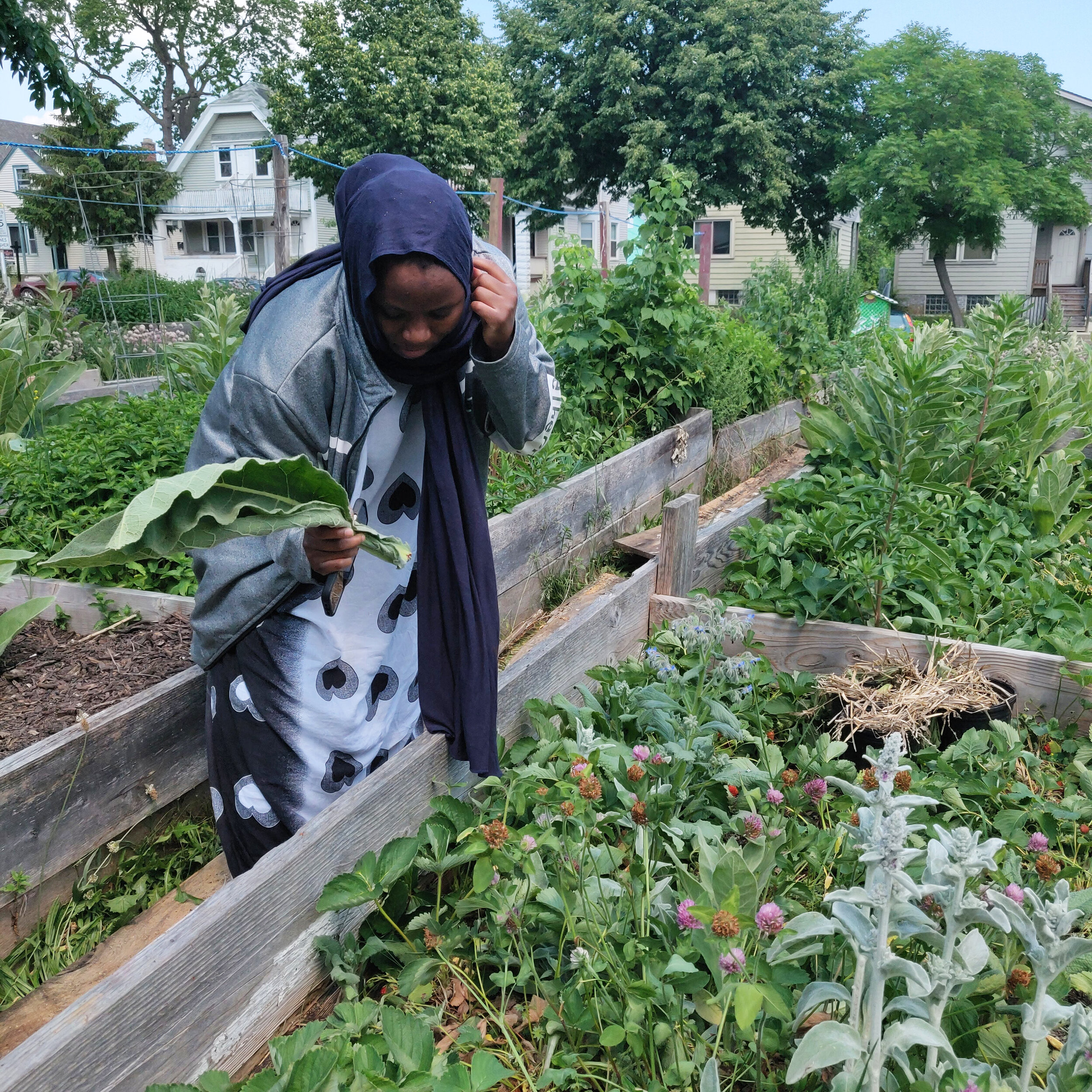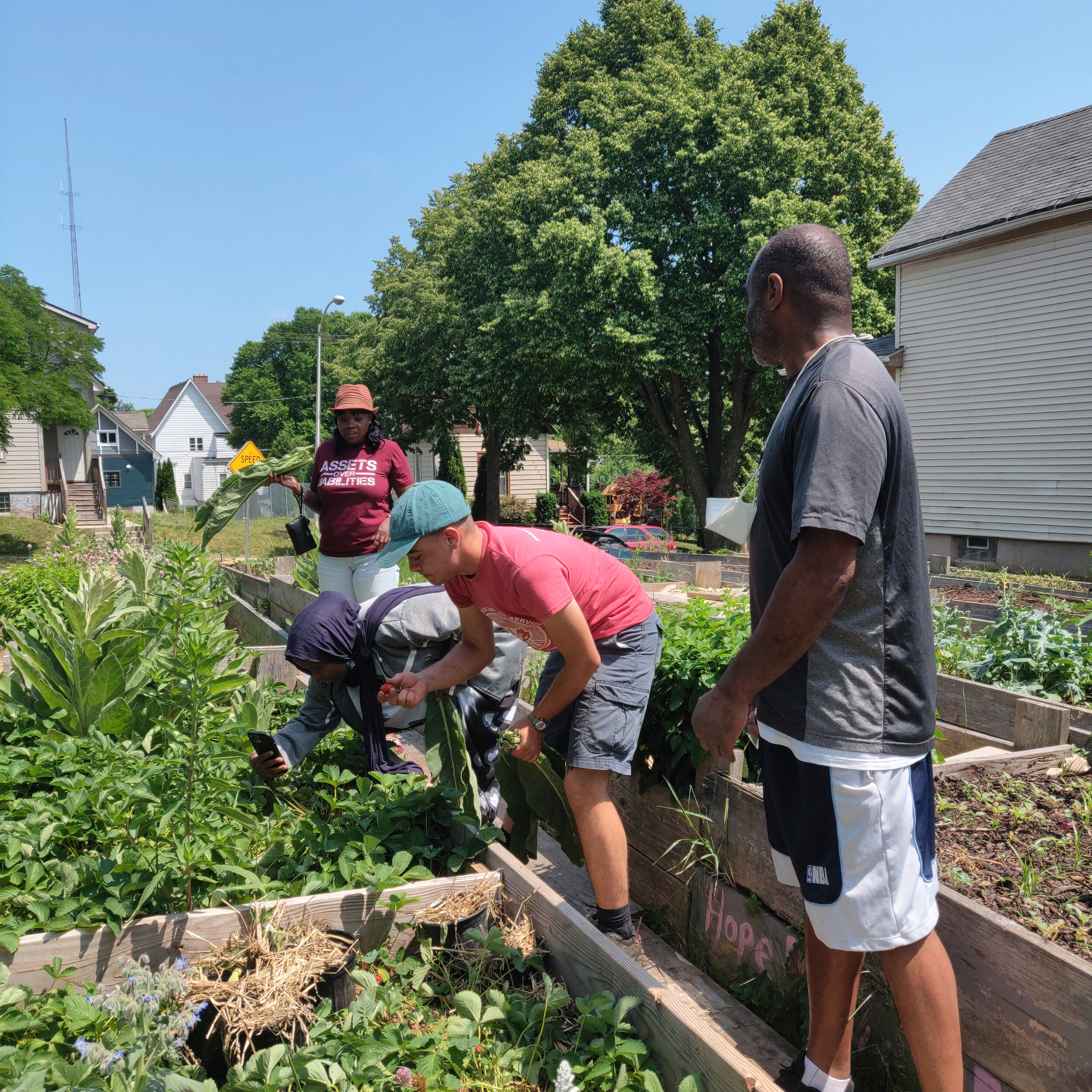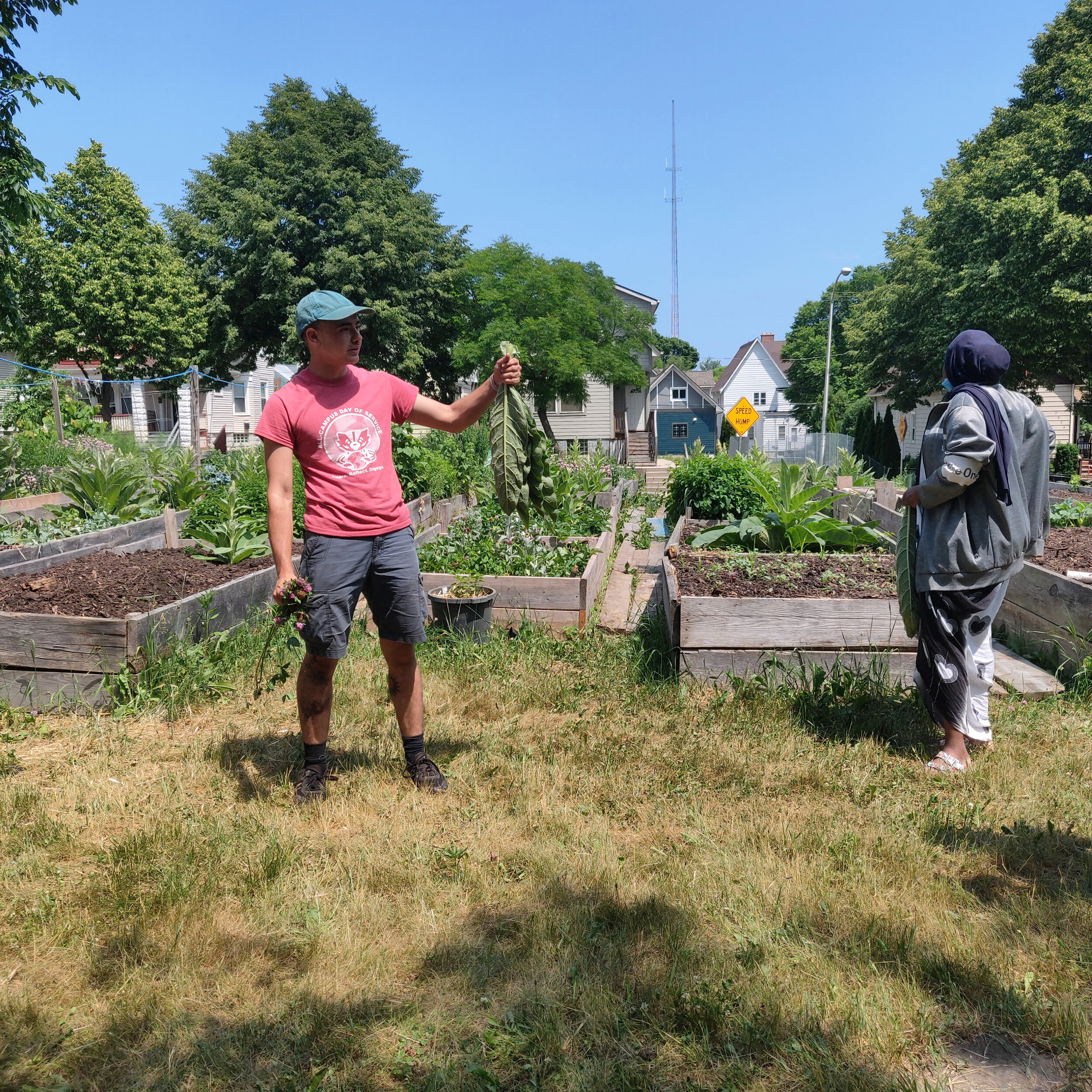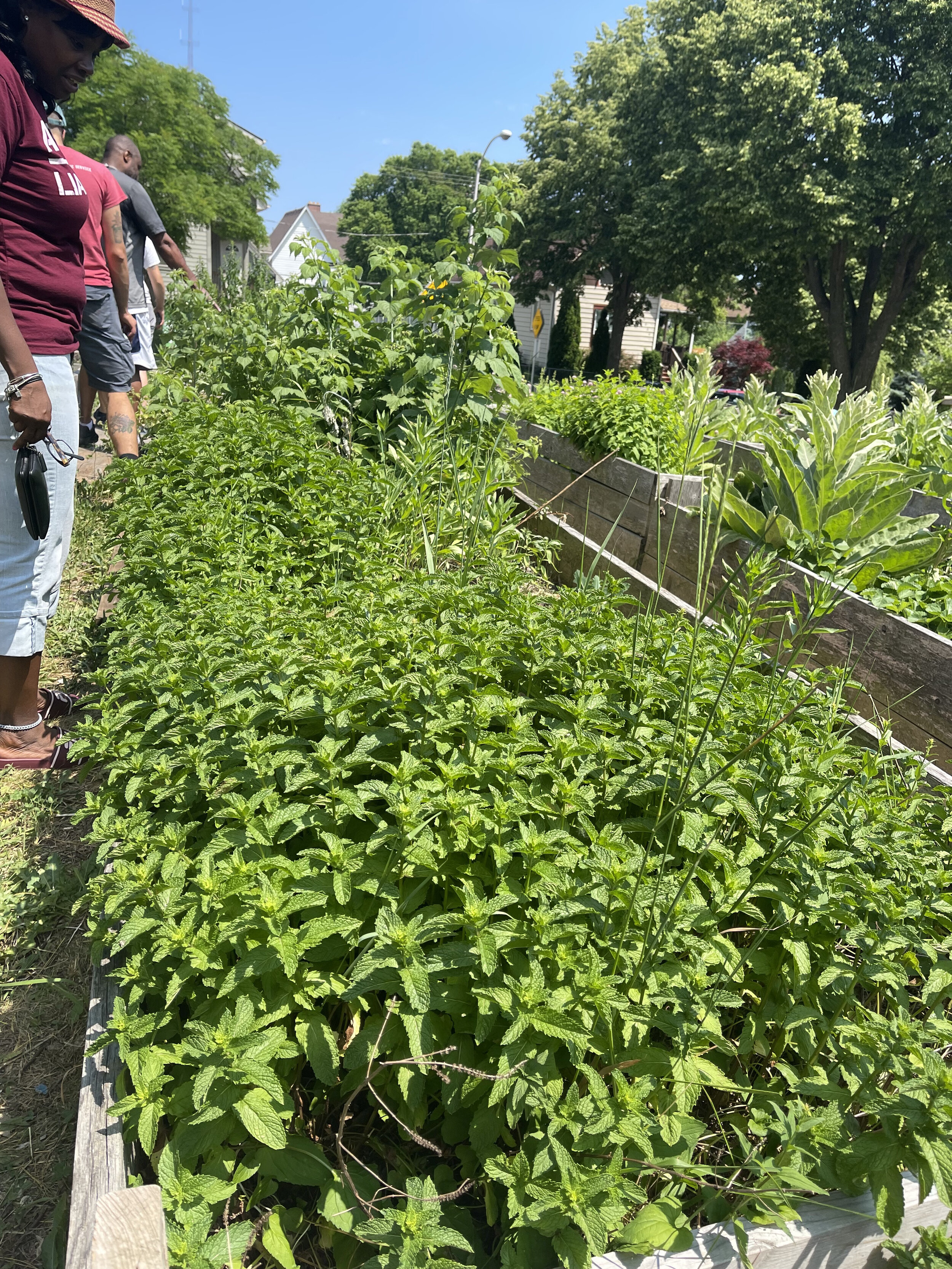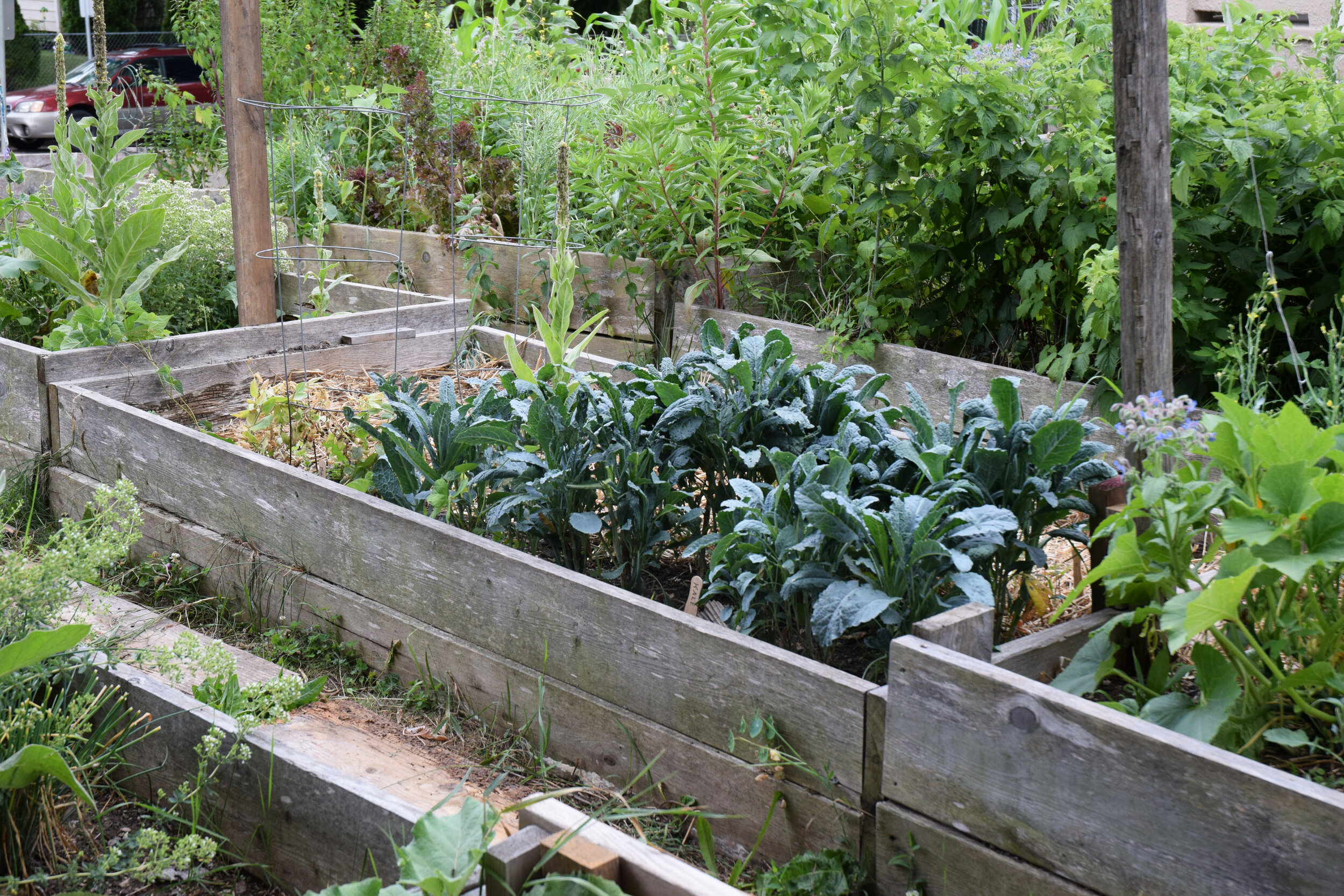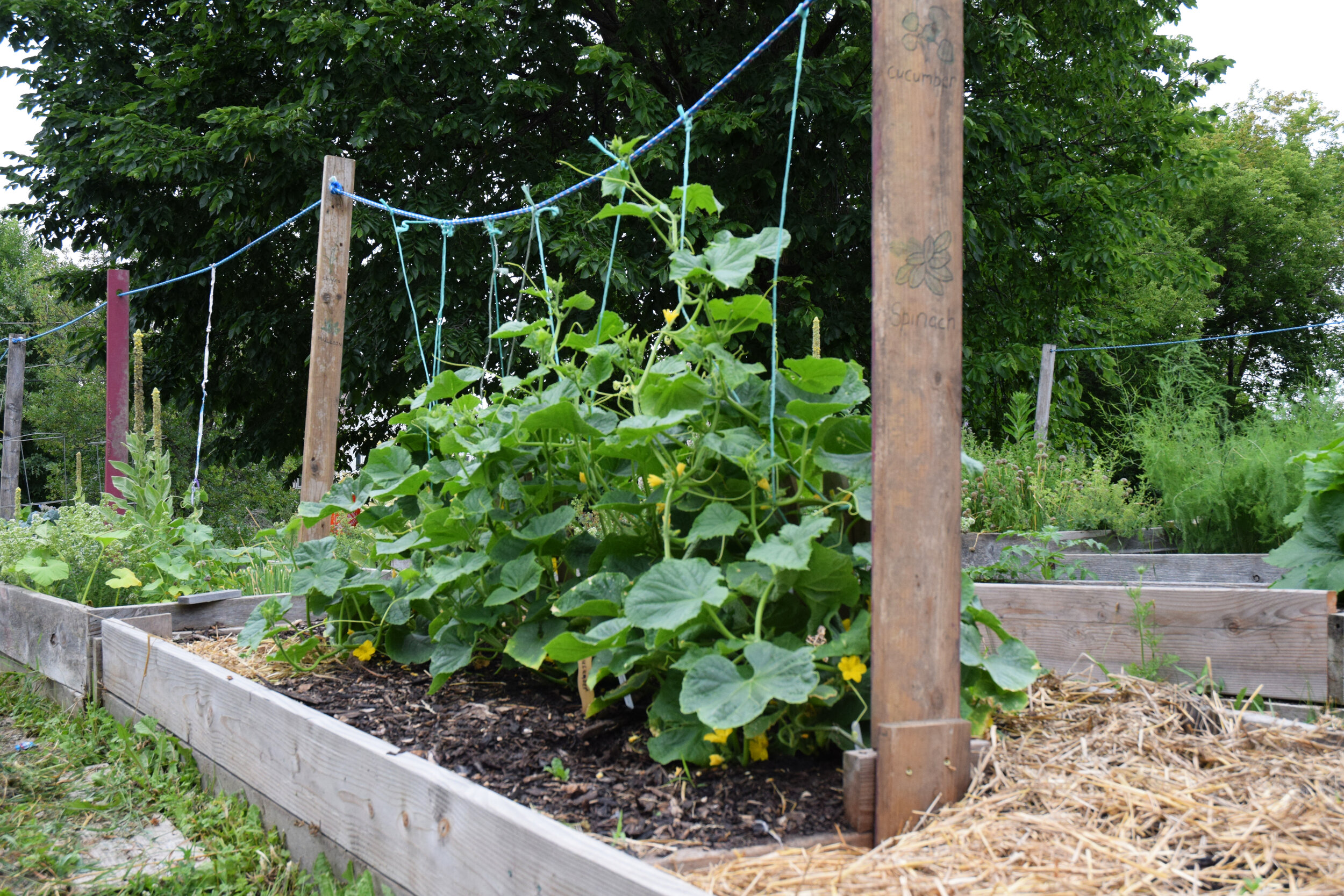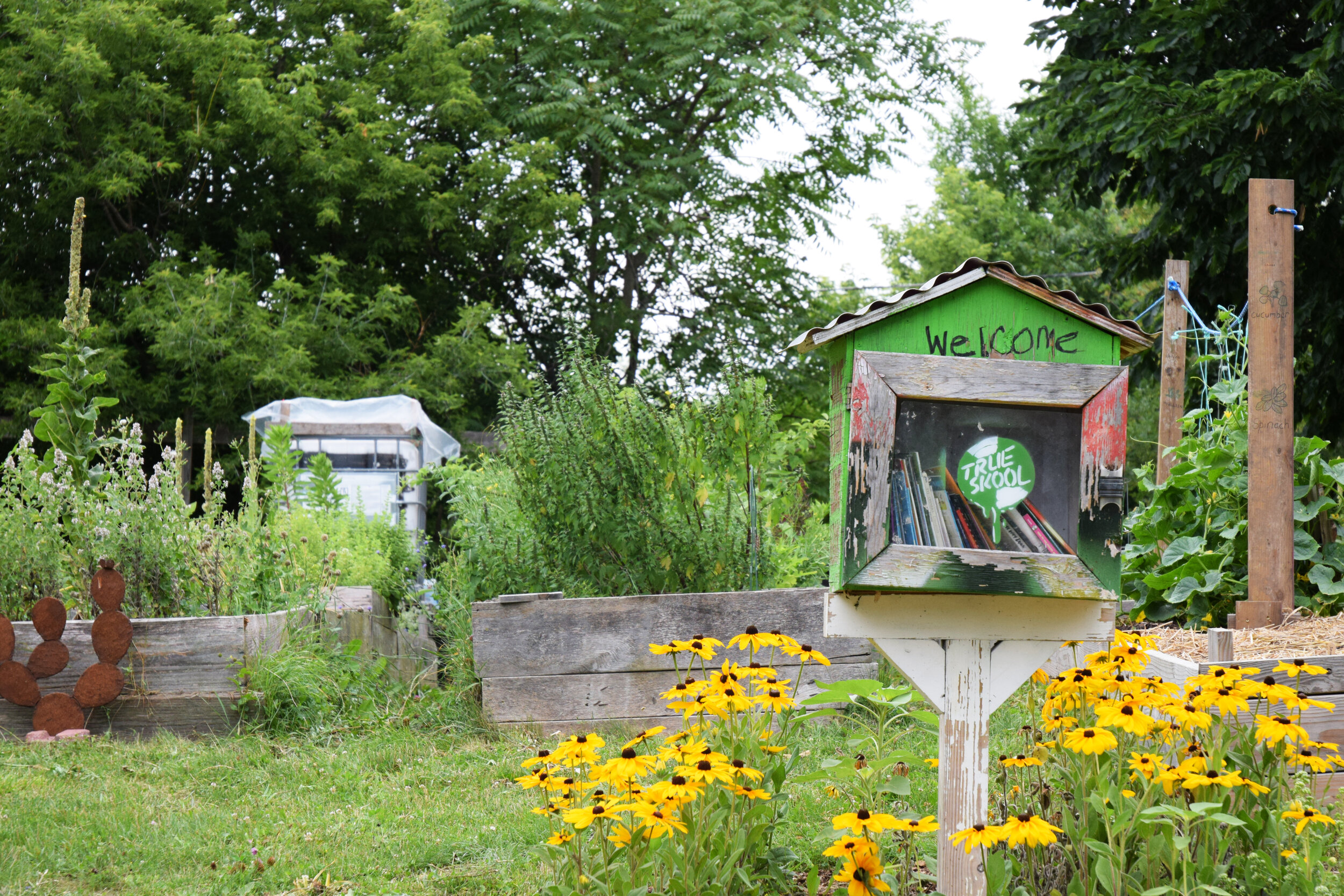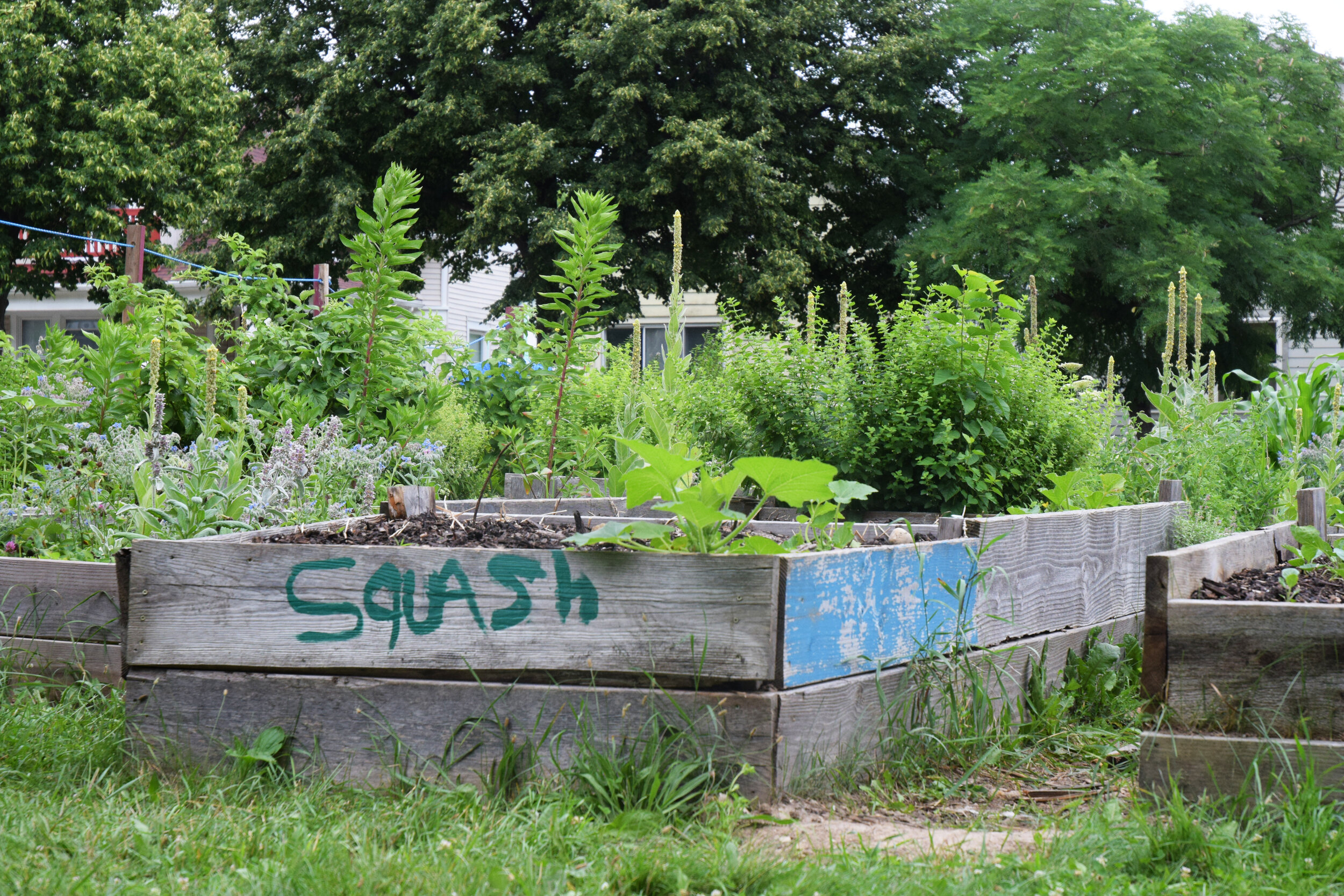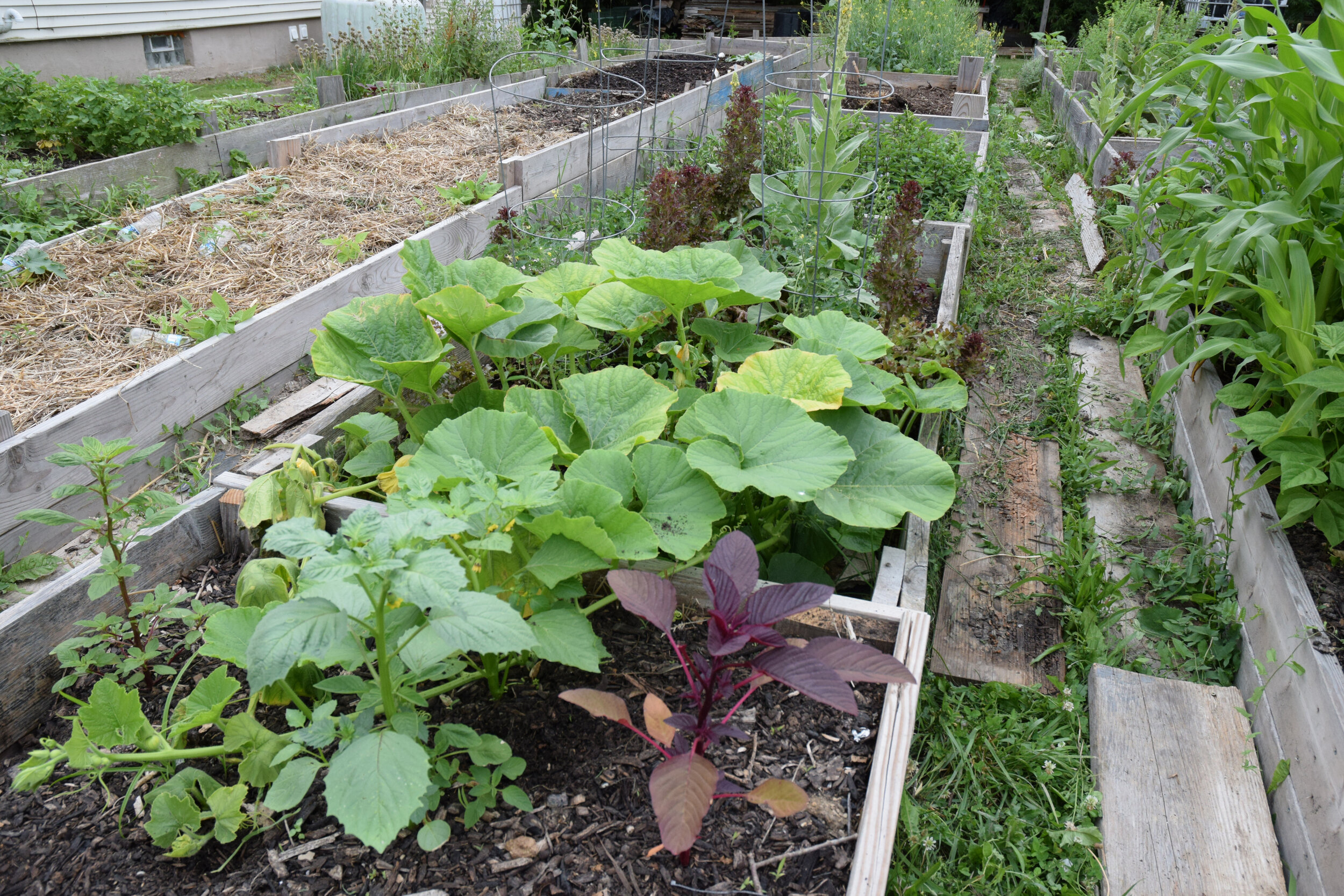Community Spotlight: Hilltop Community Farm & Garden
In the Harambee neighborhood on Buffum Street, right between Meinecke and North Avenue, lives Hilltop Community Farm & Garden. The first thing you notice when you visit the space are the garden beds. There are fifty of them in total, each is 4’x 8’, laid out in long lines with skinny pathways in between each strip. Many perennial herbs are in full bloom at this point in the growing season. Massive stalks covered in flowers dominate the view. As you walk down the rows, you’ll see the picnic table and chairs under the tree, inviting you to take a rest and enjoy the view. The garden is a hodgepodge of scrapped and recycled materials that have been arranged to create a vibrant green pocket in Harambee where gardeners use all types of growing techniques to raise a diverse variety of fresh food.
“I think community greenspace is an undeniably essential part of life. You can’t just have a concrete jungle. Our brains are hardwired to be outside, to play around. You can’t just be in a house all day. Greenspace creates these safe spaces for people to have genuine interactions.”
This quote is from Nick Montezon, Groundwork Milwaukee’s Field Operations Manager and the main garden steward of Hilltop. He took the space over after it had been abandoned by a previous garden leader. Garden abandonment is an unfortunate but understandable reality in the nature of volunteer-run greenspace. Community gardens require time, energy, and love from all types of neighbors to remain vibrant neighborhood assets. Nick took over the space in 2016, and after surveying the neighborhood, re-named what was previously Harambee Homestead to Hilltop Community Farm & Garden.
“A neighbor told me about this song that came out - like the Hilltop Gang in the 90s and that people on this block were claiming that they were part of the Hilltop. I just liked the name.”
With paperwork signed and Nick listed as the new garden leader, he got to work building the garden from the ground up. Using scrapped wood left over from Groundwork projects, found in alleyways, or otherwise scrounged, he turned the four original garden beds into a 50 bed growing paradise over three years. Nick originally envisioned Hilltop as a production garden.
“I would love to be able to have young people in the neighborhood be able to make an income off of very little amount of work. Many of the beds have perennial herbs like mint and mullein that don’t require much effort to maintain. We have the infrastructure to grow here, and I’d like to have the network to figure out where folks could sell, and then the knowledge to help teach people how to be able to grow and sell. For now, it’s mostly turned into a community garden without too much focus on production.”
There’s a little bit of everything growing in these beds. Everything that’s grown is offered at no cost to community members or given to food pantries through Groundwork Milwaukee’s Shared Harvest program. Around half of the beds are individual gardeners, and the rest are communally taken care of by a dedicated team of two to three folks and the support of Groundwork Milwaukee volunteers. The space has a serene quality to it. Tranquility blooms & grows in these beds right along with the tomatoes.
“I’ve always had a really positive response from everybody that lives around here. And I really made it intentional to get to know everybody here. I live a fifteen minute walk from here - so I knew I needed to make a good impression on folks who live directly on the block and make them a priority in terms of who gets access to the gardens, to the food. One of the first things I did when I started here was litter cleanups. I’m trying to build trust in these small ways, just by cleaning up.”
Making sure that the neighbors see the garden as a community space and are invited to take part in the harvest is crucial to Nick and his team’s work.
“Everytime I’m here, people will say hey, wave to me. Sometimes bring me water or food, stuff like that, if I’m out here working. And then I’m also able to go knock on doors and bring bundles of goodies, like hey I got a ton of herbs. Come on in, this is your space. In general - there's a bounty. You get to harvest season and when it rains - it pours. It’s like - please take this! Someone! For me, the real trick is that first connection. So I try to knock on the door and bring whatever I got. Give them that first taste and hope they come back for more.”
Gardens are nature spaces for community gathering. It’s part of what brings wellness and health to a community. Hilltop Community Farm & Garden aims to be a space of community members to gather, connecting with each other and with the land. This made the space a natural candidate to be one of six of Groundwork Milwaukee’s Community Health Hub Gardens.
“Health Hubs is awesome. It’s brought a bunch more resources to the garden in a couple different ways. One of them is just capacity. I got a lot of help in the spring and this fall from the Groundwork team to build new beds, repair old ones. We’ve built at least six or seven new garden beds on site. I like the concept of connecting gardens to health outcomes. There is a dynamic of resources that Groundwork is bringing with healthy planting classes, healthy cooking classes, yoga and stretching, and the physical work itself. One of our volunteers here talks about how gardening is his physical therapy. It’s his break from his work.”
The emphasis on health can be seen in the selection of plants that are grown. According to Montezon, nearly half of the plants have medicinal value. Some of these plants include motherwort and mullein. A few beds are dedicated to perennial berries like raspberries and strawberries. The rest of the beds are growing a variety of annuals like greens, cucumbers, tomatoes, and more.
If you’re walking past Hilltop on a Sunday morning, it’s more than likely someone will invite you to harvest some mint or any of the other generous herbs growing strong. You’ll hopefully have a moment to talk with that person and hear about their connection to the space and why it matters to them.
“A big part of community gardens, to me, is about power and giving power to the people who live on the block. To say, I have the power to design the world around me. I can look outside and see a space that’s vacant, a space that’s depreciating, and turn it into an asset. To build around an idea that is my own. This is a space where you can put your vision to life and you have ownership, you have control. This is a greenspace. Come in. Build it.”

